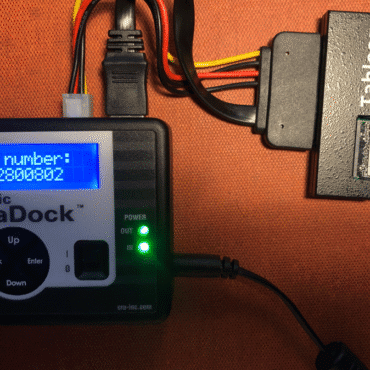Introduction
Messaging apps like WhatsApp, Telegram, and Signal dominate personal and professional communication. These apps also serve as platforms for criminal activity, requiring forensic investigation. App-based forensics focuses on extracting evidence from applications while preserving data integrity and ensuring legal compliance.
Encryption, cloud backups, and ephemeral messaging features make tracing evidence challenging. This blog explains techniques, tools, and best practices for WhatsApp, Telegram, and Signal forensics.
What is App-Based Forensics?
App-based forensics examines application data stored on mobile devices, tablets, and desktops. Unlike traditional mobile forensics, which inspects the entire device, app-based forensics targets specific applications.
Key objectives:
-
Recover chat messages, call logs, and media files
-
Analyze metadata such as timestamps and sender/receiver information
-
Access cloud backups with proper authorization
-
Extract evidence from deleted or encrypted messages
This approach suits apps with strong privacy protections and cloud storage.
WhatsApp Forensics
WhatsApp ranks among the most widely used messaging apps, making it a frequent target in investigations. End-to-end encryption allows only users to read messages, complicating evidence retrieval.
Evidence Sources in WhatsApp
-
Local Databases: Stored in SQLite databases on Android (/data/data/com.whatsapp/databases/) and iOS devices.
-
Cloud Backups: Google Drive (Android) and iCloud (iOS) store chat history, media, and metadata. Investigators require proper authorization to access them.
-
Media Files: Photos, videos, and audio files appear in app folders or device gallery. Metadata provides timestamps and device information.
-
Logs and Metadata: Deleted messages may leave traces, including timestamps and sender/receiver details.
Tools for WhatsApp Forensics
-
Cellebrite UFED: Extracts messages, deleted chats, and media.
-
Magnet AXIOM: Recovers chat histories, attachments, and metadata.
-
Oxygen Forensic Detective: Offers detailed insights into messages and media files.
Telegram Forensics
Telegram relies on cloud-based messaging and advanced privacy features. Forensic investigation differs from WhatsApp due to its architecture.
Evidence Sources in Telegram
-
Cloud Messages: Stored in Telegram’s cloud, accessible with account credentials or legal authorization.
-
Local Storage: Cached media files, session info, and SQLite databases for downloaded messages.
-
Secret Chats: End-to-end encrypted and device-specific. Investigators must access the original device.
-
Metadata: Login sessions, IP addresses, and timestamps reveal user activity.
Tools for Telegram Forensics
-
Belkasoft Evidence Center: Extracts messages and media.
-
Magnet AXIOM: Supports cloud and local data extraction.
-
Oxygen Forensic Detective: Provides session analysis and metadata recovery.
Signal Forensics
Signal emphasizes privacy with end-to-end encryption and minimal metadata storage. Investigators face significant challenges.
Evidence Sources in Signal
-
Local Database: Messages reside in an encrypted SQLite database (signal.db). Access requires device unlock and app passphrase.
-
Media Files: Stored encrypted on the device. Recovery requires decryption keys.
-
Metadata: Minimal logs, including timestamps, remain locally. IP addresses and routing information are generally inaccessible.
-
Backups: Signal provides encrypted local backups (Android). Cloud backups are unavailable.
Tools for Signal Forensics
-
Cellebrite UFED: Extracts Signal databases from unlocked devices.
-
Oxygen Forensic Detective: Parses encrypted databases if keys are available.
-
Custom Decryption Scripts: Used when commercial tools cannot decrypt files.
Challenges in App-Based Forensics
-
Encryption: Prevents direct access to message content.
-
Ephemeral Messaging: Disappearing messages and self-destructing media complicate collection.
-
Cloud Dependency: Requires user credentials or legal authorisation.
-
Device Security: Locked devices, secure storage, and biometrics limit extraction.
-
Legal Compliance: Investigators must follow strict protocols to avoid privacy violations.
Best Practices for App-Based Forensics
-
Use Certified Tools: Ensure tools maintain data integrity.
-
Document Processes: Record extraction methods, timestamps, and analysis steps.
-
Preserve Originals: Work on cloned images or backups.
-
Cross-Verify Sources: Validate findings from local storage, cloud backups, and media files.
-
Follow Legal Protocols: Obtain warrants, consent, or legal authorisation before accessing app data.
Conclusion
App-based forensics plays a critical role in modern digital forensic investigations, especially for apps like WhatsApp, Telegram, and Signal. Strong encryption, ephemeral messaging, and cloud storage complicate evidence collection. However, skilled forensic experts recover critical data using specialised tools and methods.
By understanding each app’s structure, using certified tools, and following legal standards, investigators extract reliable and admissible evidence. App-based forensics bridges technology and justice, helping uncover digital evidence for legal proceedings and criminal investigations.





Post comments (0)